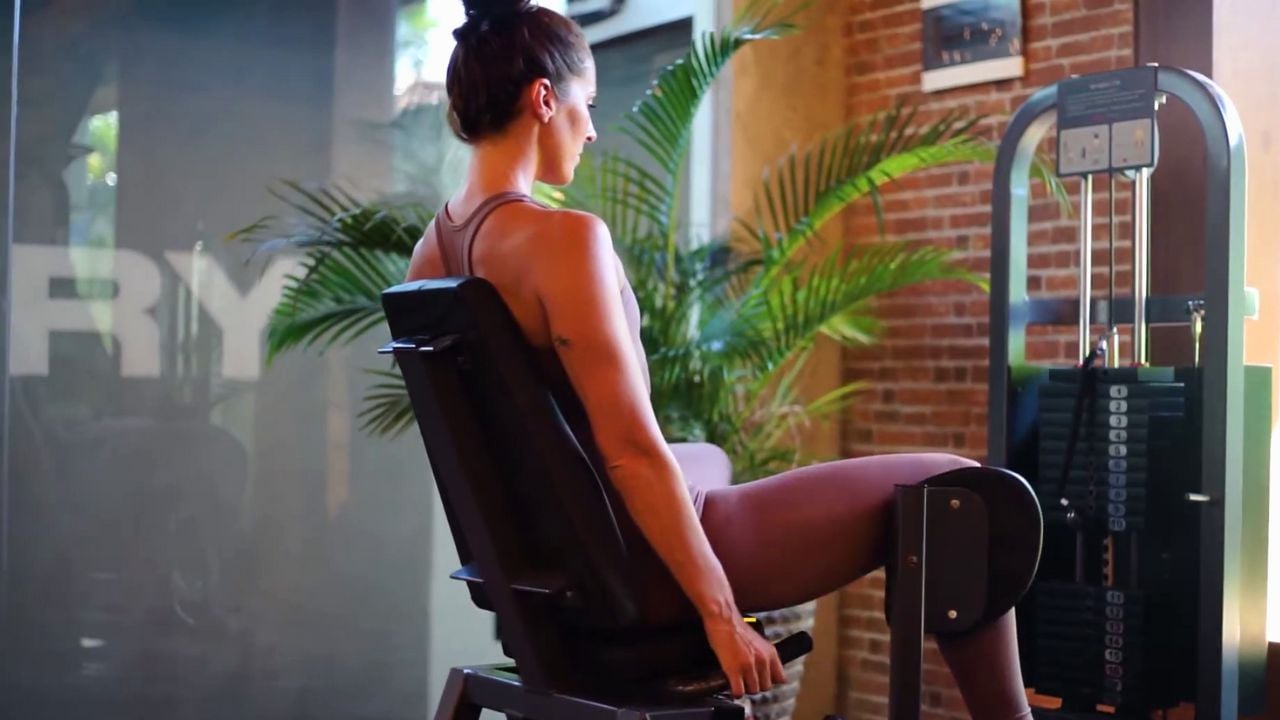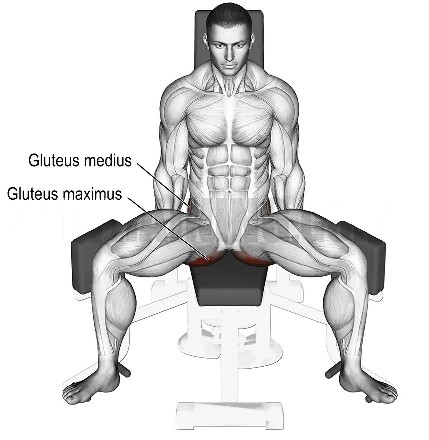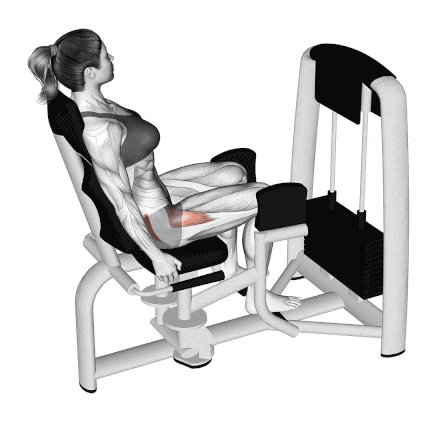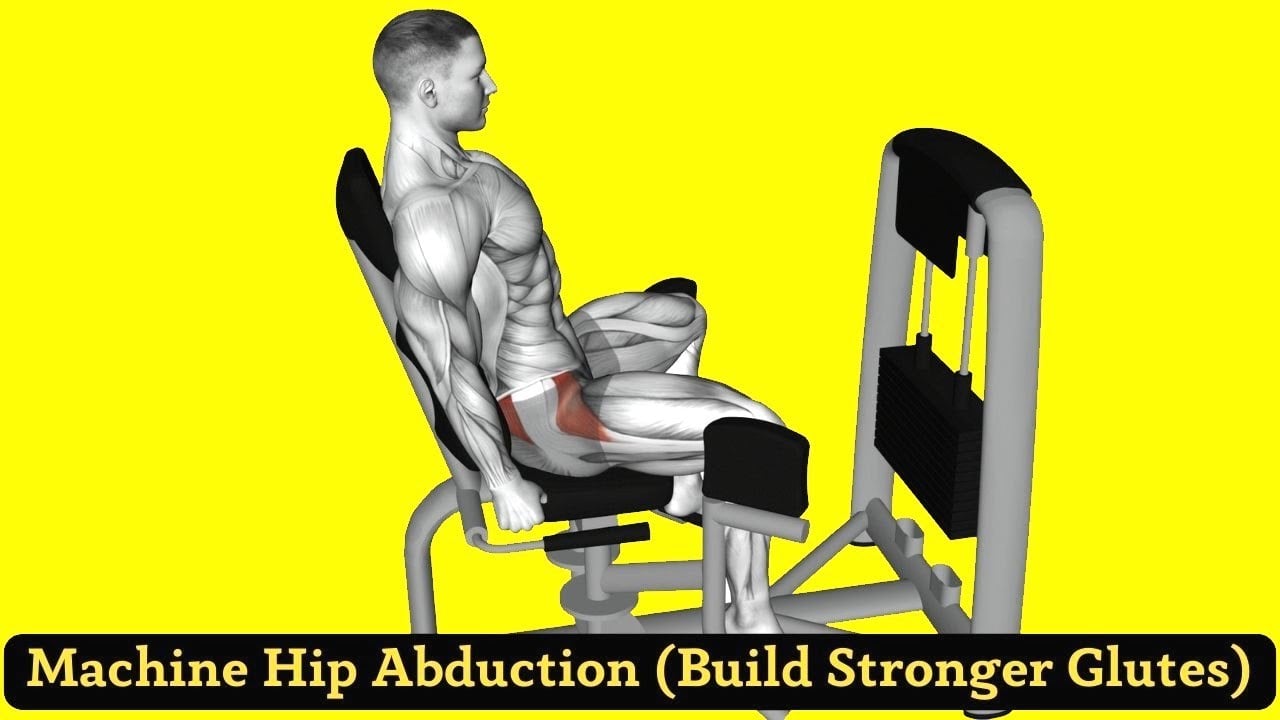The machine hip abduction is an isolation exercise that targets the hip abductor muscles, including the gluteus medius, gluteus minimus, and tensor fasciae latae.
As a trainer, I’ve witnessed clients overcome hip issues, improve hip stability, and enhance performance in various athletic activities and daily movements by regularly using the hip abduction machine.
Hip abduction is simply the movement of moving your legs away from the center of your body. Imagine that you are standing and raising your leg out to the side; that’s hip abduction.
The hip abduction machine isolates this movement and adds resistance to strengthen the hip abductor muscles. After pushing out, you control the movement by returning your legs to the starting position.

Machine Hip Abduction Muscle Worked
- The primary Muscles worked during machine hip abductions are Gluteus Medius, Gluteus Minimus and Tensor Fasciae Latae (TFL)
- The exercise also engages the piriformis and stabilizing hip muscles and core muscles.

How to Use Hip Abduction Machine
- Sit on the machine and find a seat height where your knees are bent at about a 90-degree angle and your feet are flat on the footplates.
- Position the padded levers on the outside of your upper thighs, close to your hips.
- Select a challenging weight on the weight stack that allows for controlled movement and good muscle stimulation.
- Sit upright with your back against the pad and your spine neutral. Also, engage your core muscles to provide stability.
- Exhale and push both legs outward against the resistance of the lever arms (separate your legs as far as comfortable).
- When you are fully abducted, squeeze your glutes and abductors for a short time.
- Inhale and slowly bring your legs back together, controlling the resistance of the lever arms.
- Do 10–15 Reps and 3–4 Sets

Hip Abduction Machine Tips
- Ensure that you’re seated correctly, with your hips aligned with the pivot point of the lever arms.
- Avoid rounding your back or arching excessively. Sit tall with your core engaged.
- Don’t force the movement beyond a comfortable range. Stick to a range that allows you to maintain control and proper form.
- Resist the temptation to use momentum. Move slowly and with control during the abduction (outward) and adduction (inward) phases.
- Exhale during the abduction (outward) movement and inhale during the adduction (inward) movement.
- Experiment slightly with your foot position (toes pointing slightly out or forward) to see what best helps you target your hip abductors.
- Some machines allow you to work one leg at a time. In this case, alternate between legs for a balanced workout.
Hip Abduction Machine Benefits
This important piece of gym equipment can help you get fitter, do better, and feel better.
- The primary benefit of this machine is that it effectively targets and strengthens the hip abductor muscles, specifically the gluteus medius and tensor fasciae latae (TFL).
- The hip adductors are essential during compound exercises like squats, lunges, and deadlifts. Strengthening these muscles will make you more stable and balanced during heavy lifts.
- Strong hip abductors help maintain proper pelvic alignment and posture. Strengthening them can improve posture and gait mechanics and reduce lower back pain.
- Build stronger hips, as weak hip adductors can lead to imbalances and compensations. This increases the risk of injuries such as groin strains, knee pain, and IT band syndrome.
- Hip adductors are essential for athletes or people who like to sprint or cycle. These muscles help the body move forward, which makes movements faster and better.
Takeaways
The hip abduction machine offers a focused approach to strengthening your hip abductor muscles.
Now it’s your turn! Go to the gym and try the hip abduction machine. Be careful about how you use it. Please share your experience in the comments below.
Do you have any other questions about hip abductors or exercises to strengthen them? Share your thoughts!
References
- Macadam p, cronin j, contreras b. An examination of the gluteal muscle activity associated with dynamic hip abduction and hip external rotation exercise: a systematic review. Int j sports phys ther. 2015 oct;10(5):573-91. Pmid: 26491608; pmcid: pmc4595911.
- Flack NAMS Nicholson HD Woodley SJ. A review of the anatomy of the hip abductor muscles, gluteus medius, gluteus minimus, and tensor fascia lata. Clin anatomy. 2012; 25:697‐708.
- Worrell TW Karst G Adamczyk D, et al. Influence of joint position on electromyographic and torque generation during maximal voluntary isometric contractions of the hamstrings and gluteus maximus muscles. J Orthop Sports Phys Ther. 2001;31:730‐740.

Manish is a NASM-certified fitness and nutrition coach with over 10 years of experience in weight lifting and fat loss fitness coaching. He specializes in gym-based training and has a lot of knowledge about exercise, lifting technique, biomechanics, and more.
Through “Fit Life Regime,” he generously shares the insights he’s gained over a decade in the field. His goal is to equip others with the knowledge to start their own fitness journey.

